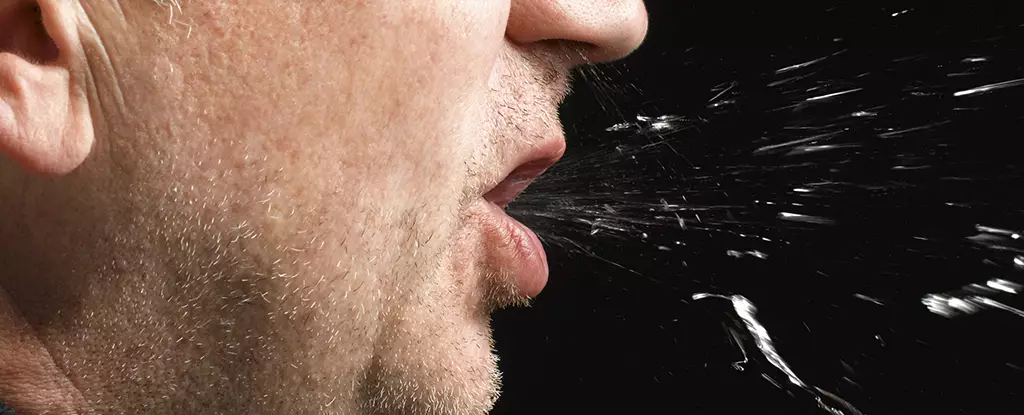One of the more pressing issues in public health has been understanding the mechanics of how respiratory droplets transmit infectious diseases. Recent studies provide a clearer picture of how droplets move through the air, thereby influencing our response to public health crises. For instance, a study recently conducted in France analyzed the trajectory of saliva droplets during various respiratory actions—talking, coughing, and breathing. Researchers enlisted 23 volunteers to explore the dynamics of droplet movement in an environment conducive to precise observation.
The research employed an innovative method known as Interferometric Laser Imaging for Droplet Sizing (ILIDS). This technique utilizes high-speed cameras to capture minute details about droplet size and velocity against a backdrop of laser light. The findings revealed a significant range of droplet sizes generated during different activities, indicating that our day-to-day interactions could be pivotal pathways for disease spread.
Spit and Spread: The Science Behind It
The results of the study showed that speaking and coughing produced droplets ranging from 2 to 60 micrometers, while normal breathing generated smaller droplets within a 2 to 8 micrometer range. The implications of these findings are profound for understanding the transmission mechanics of respiratory diseases. Coughing not only ejected droplets at a considerably faster rate but also produced a higher concentration of droplets compared to normal verbal communication or quiet exhalation. Such data offer a compelling argument for maintaining physical distance in both social and healthcare contexts.
What’s particularly intriguing is the observation of “superspreaders”—individuals who significantly increase the transmission rate within communities. The study noted variability in droplet emissions not just across participants but even within individual sessions. This inconsistency highlights the need for further research into how distinct anatomical features or even variations in respiratory health can affect the emission of droplets. It emphasizes a nuanced understanding of infection control measures; not everyone poses the same risk.
Face Masks: A Barrier to Transmission
The study also provided promising evidence regarding the efficacy of masks in curbing droplet dispersion. When participants donned surgical and tissue masks, they blocked between 74 to 86 percent of expelled droplets across all types of respiratory activities. This statistic is particularly encouraging in light of ongoing debates about the efficacy of masks in protecting public health. While it’s important to recognize that no barrier is perfect, these findings advocate for mask usage as part of a broader public health strategy.
Yet, the variability among participants’ droplet emissions raises critical points regarding mask adherence and individual facial anatomy. While masks generally work to mitigate the spread of droplets, how well they do so can differ greatly. This variation could provide insight into what makes an individual more or less likely to spread infections, a factor that has significant implications for public safety and public policy.
A Call for Expanded Research
The researchers behind this study emphasize the necessity for further investigation to enhance understanding of how infectious diseases spread. Their goal is to gather data from a broader demographic, which could potentially cement existing findings or reveal additional layers of complexity in droplet emission dynamics. Expanding the volunteer base could help clarify how differences in individual physiology affect droplet dispersion, leading to more targeted public health recommendations.
The goal is clear: to forge guidelines that recommend precautions—like mask-wearing—that effectively reduce disease transmission rates. As we navigate an era marked by heightened viral threats, this kind of research provides invaluable insights into how to protect populations, particularly vulnerable ones.
While the mechanics of droplet transmission may seem mundane, the implications for public health are anything but trivial. Understanding how far our “spittle” flies allows us not only to model the spread of disease more effectively but to design better strategies for infection control that can fundamentally reshape our societal interactions, especially in times of health crises.

